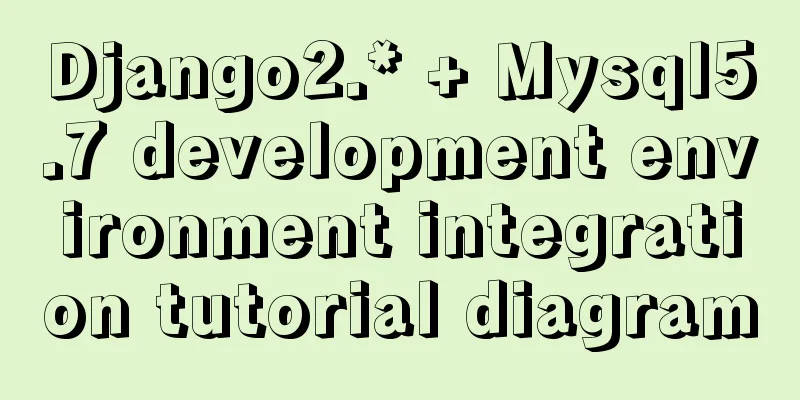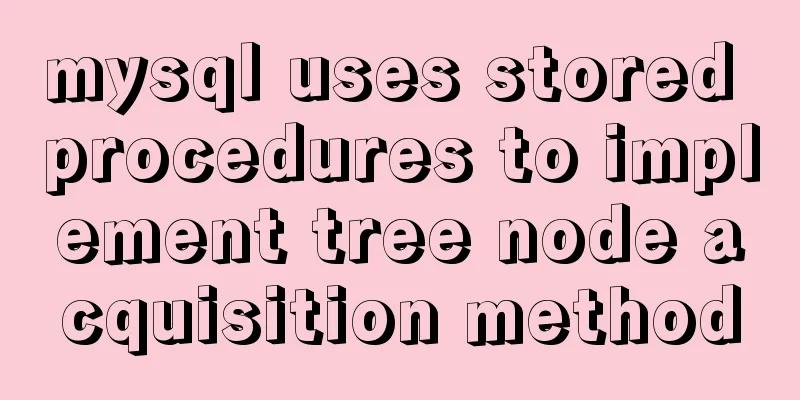Install mysql5.7.13 using RPM in CentOS 7

|
0. Environment Operating system for this article: CentOS 7.2.1511 x86_64 1. Uninstall the mariadb-lib that comes with the system [root@centos-linux ~]# rpm -qa|grep mariadb mariadb-libs-5.5.44-2.el7.centos.x86_64 [root@centos-linux ~]# rpm -e mariadb-libs-5.5.44-2.el7.centos.x86_64 --nodeps 2. Download the rpm installation package Go to the official website to find the latest rpm collection package. Now the latest is mysql-5.7.13-1.el7.x86_64.rpm-bundle.tar Copy the code as follows: [root@centos-linux ~]# wget http://dev.mysql.com/get/Downloads/MySQL-5.7/mysql-5.7.13-1.el7.x86_64.rpm-bundle.tar Then unzip [root@centos-linux ~]# ls mysql-5.7.13-1.el7.x86_64.rpm-bundle.tar [root@centos-linux ~]# tar xvf mysql-5.7.13-1.el7.x86_64.rpm-bundle.tar mysql-community-test-5.7.13-1.el7.x86_64.rpm mysql-community-embedded-5.7.13-1.el7.x86_64.rpm mysql-community-embedded-compat-5.7.13-1.el7.x86_64.rpm mysql-community-server-5.7.13-1.el7.x86_64.rpm mysql-community-client-5.7.13-1.el7.x86_64.rpm mysql-community-common-5.7.13-1.el7.x86_64.rpm mysql-community-server-minimal-5.7.13-1.el7.x86_64.rpm mysql-community-embedded-devel-5.7.13-1.el7.x86_64.rpm mysql-community-devel-5.7.13-1.el7.x86_64.rpm mysql-community-libs-compat-5.7.13-1.el7.x86_64.rpm mysql-community-libs-5.7.13-1.el7.x86_64.rpm mysql-community-minimal-debuginfo-5.7.13-1.el7.x86_64.rpm 3. Installation [root@centos-linux ~]# rpm -ivh mysql-community-common-5.7.13-1.el7.x86_64.rpm [root@centos-linux ~]# rpm -ivh mysql-community-libs-5.7.13-1.el7.x86_64.rpm [root@centos-linux ~]# rpm -ivh mysql-community-client-5.7.13-1.el7.x86_64.rpm [root@centos-linux ~]# rpm -ivh mysql-community-server-5.7.13-1.el7.x86_64.rpm 4. Database initialization In *nix systems, to ensure that the database directory and files are owned by the mysql login user, if you run the mysql service as root, you need to execute the following command to initialize
The last line in the above picture gives the generated password. Now you can start the database and log in using the above password. [root@centos-linux ~]# systemctl start mysqld [root@centos-linux ~]# mysql -uroot -p Enter password: Welcome to the MySQL monitor. Commands end with ; or \g. Your MySQL connection id is 2 Server version: 5.7.13 Copyright (c) 2000, 2016, Oracle and/or its affiliates. All rights reserved. Oracle is a registered trademark of Oracle Corporation and/or its affiliates. Other names may be trademarks of their respective owners. Type 'help;' or '\h' for help. Type '\c' to clear the current input statement. mysql> 5. Change the root password The password has been marked as expired. If you want to use it normally, you need to change the password mysql> show databases; ERROR 1820 (HY000): You must reset your password using ALTER USER statement before executing this statement. The previous password() function will be abandoned. The official recommendation is to use the following command to change the password mysql> ALTER USER 'root'@'localhost' IDENTIFIED BY 'new_password'; At the same time, if the password you set is too simple, an error will be reported. mysql> ALTER USER 'root'@'localhost' IDENTIFIED BY '123'; ERROR 1819 (HY000): Your password does not satisfy the current policy requirements For specific rules about setting passwords, please refer to this article. The above is the full content of this article. I hope it will be helpful for everyone’s study. I also hope that everyone will support 123WORDPRESS.COM. You may also be interested in:
|
<<: How to implement remote automatic backup of MongoDB in Linux
>>: A brief analysis of the event delegation mechanism and deep and shallow copying in JavaScript
Recommend
Creating a Secondary Menu Using JavaScript
This article example shares the specific code of ...
Public free STUN servers
Public free STUN servers When the SIP terminal us...
Two ways to export csv in win10 mysql
There are two ways to export csv in win10. The fi...
Share 5 JS high-order functions
Table of contents 1. Introduction 2. Recursion 3....
How to solve the phantom read problem in MySQL
Table of contents Preface 1. What is phantom read...
Detailed explanation of JavaScript prototype and examples
Table of contents The relationship between the co...
Summary of the use of element's form elements
There are many form elements. Here is a brief sum...
How to access the local machine (host machine) in Docker
Question How to access the local database in Dock...
Detailed explanation of the concept, principle and usage of MySQL triggers
This article uses examples to explain the concept...
Detailed explanation of how to access MySQL database remotely through Workbench
Preface Workbench is installed on one computer, a...
DHTML objects (common properties of various HTML objects)
!DOCTYPE Specifies the Document Type Definition (...
MySql 5.6.35 winx64 installation detailed tutorial
Note: There was no error in the project startup d...
SQL fuzzy query report: ORA-00909: invalid number of parameters solution
When using Oracle database for fuzzy query, The c...
Detailed explanation of MYSQL database table structure optimization method
This article uses an example to illustrate the me...
How to configure MySQL on Ubuntu 16.04 server and enable remote connection
background I am learning nodejs recently, and I r...










